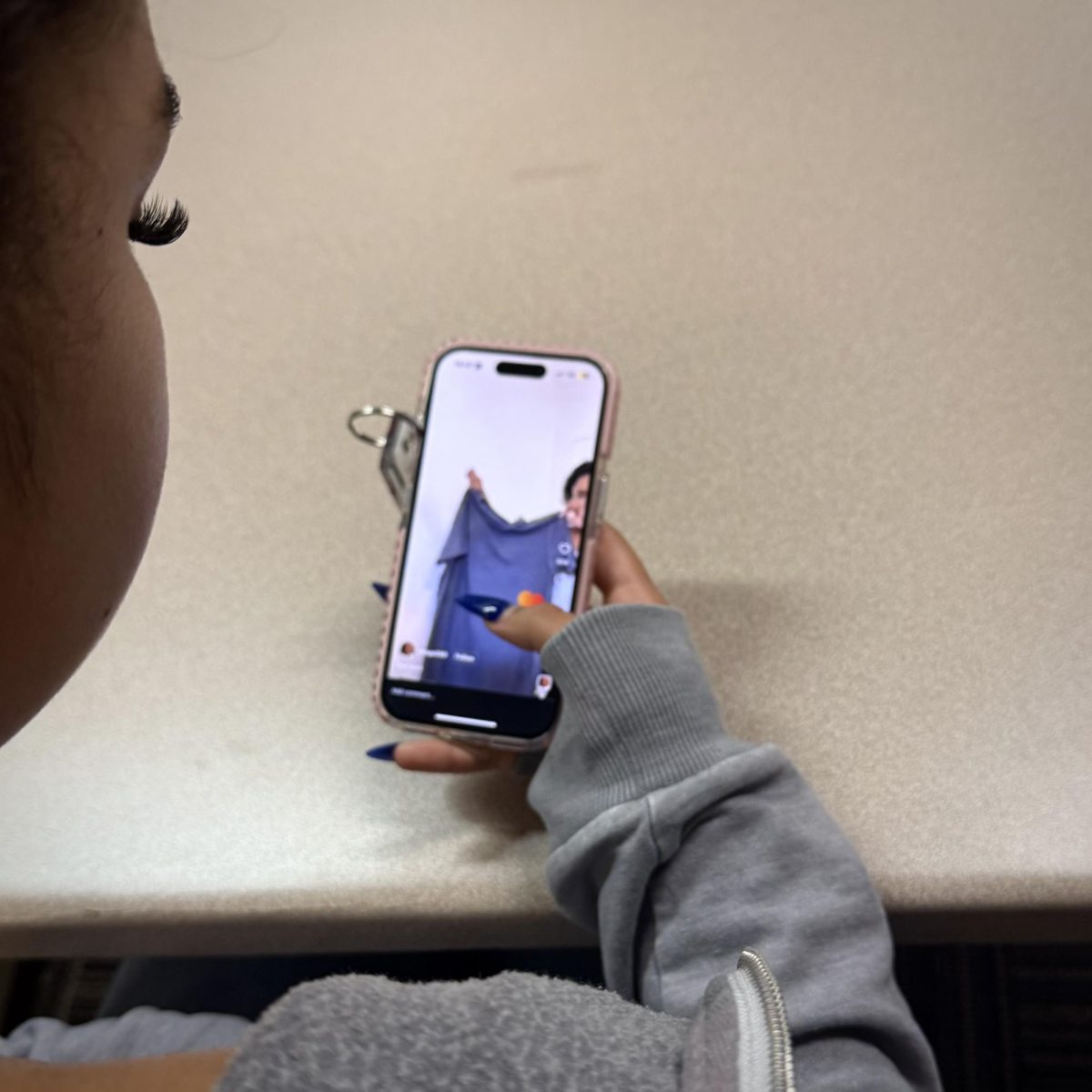On February 24, Russian President Vladimir Putin ordered waiting Russian armies to invade the sovereign nation of Ukraine, declaring war and sparking global outrage and panic. Brutal shelling, civilian lives lost, a failed assassination attempt, grassroots gunmen, nuclear threats, and the drastic fall of Russian markets have ensued.
World audiences and leaders have been shocked by this unwarranted invasion into a sovereign nation, but were the warning signs there? What has led to this conflict?
South history teacher and self-titled history nerd Matthew Norris offered some clarity on this complicated topic for South students. “I’m by no means an expert, don’t think of me as a Russian expert,” commented Norris, adding “I’m just a nerd who likes to read about this stuff.”
Early background
For much of its history, Ukraine’s borders and sovereignty have been contested by various surrounding powers. Until the 20th century, Ukraine was controlled by Poland-Lithuania, Russia, and the Union of Soviet Socialist Republics (U.S.S.R) successively. Following the fall of the Russian Empire in 1917, Ukraine attempted an unsuccessful state of independence briefly from 1918-1921, before the Bolsheviks took power and the Soviet Union seized Ukraine.
Ukrainian people endured cultural repression and constant war during this time, and as Russian President Joseph Stalin consolidated Soviet power, Ukrainians suffered the Holomodor, a famine that claimed millions of lives in the 1930s. “All of this history, a lot of it is within living memory. The Holomodor was 80 years ago,” said Norris, adding “This history gives context to the intensity that this conflict has and will continue to have.”
Ukraine remained under the control of Russia for decades, and during World War II Ukraine’s territories were expanded: parts of Poland, Hungary, and the Czech Republic were absorbed into the Soviet satellite state of Ukraine. Soviet leader Nikita Khrushchev transferred Crimea, a peninsula along the Black Sea with a population of around 2.4 million ethnic Russians, to the Ukrainian S.S.R in 1954.
Ukrainian independence
When the Soviet Union unraveled in 1991, the Ukrainian S.S.R declared independence from Russia and officially took the name Ukraine. “Ukraine leaving is the event that really precipitates the fall of the Soviet Union,” said Norris.
Ukraine formed a semi-presidential government with judicial, legislative, and executive branches. In 1994, the government made a partial military deal with NATO and was becoming an increasingly progressive country. To this day, the Russian government maintains that Ukraine is a Russian territory, and much of the current situation stems from Putin’s desire to access Ukrainian resources and rebuild Russia to its power at the height of the Soviet Union.
In 2004 Viktor Yanukovich, a Pro-Russian presidential candidate in Ukraine, was defeated. Ukraine began to move towards the European Union and Western alliances, but in 2010, Yanukovich ran again and was voted into power. In 2014 he terminated agreements with NATO and the European Union and instead formed closer economic ties to Russia. Widespread civil unrest and protest known as the Euromaidan ensued, escalating into the Revolution of Dignity which led to the overthrow of Yanukovich and the formation of a new more progressive government.
“There are accounts of snipers taking out protestors in the streets,” said Norris. “It’s horrific stuff.”
Crimea and mounting conflict
In 2014, Russia annexed Crimea, meaning Putin ordered a Russian invasion of Ukrainian territory and installed a Russian government there. Ukraine, as well as many other countries, saw this as a violation of international law. “The US still to this day sees Crimea as part of Ukraine’s sovereign territory,” said Norris. G7, a political forum including the United States and other highly developed nations, banned Russia from membership. The UN condemned the Russian government and the first round of economic sanctions against Russia were imposed.
Russia has maintained that the Ukrainian government is illegitimate and Ukrainian territory belongs to Russia. For eight years, the Russian government has sent support and funds to Russian separatist groups in Ukraine and slowly built up a military presence on the border.
In January of 2022, a greater volume of Russian troops accumulated at the border between Ukraine and Russia. NATO accused Russia of planning an invasion, and Russia denied any ulterior motives.
During this time, President Vladimir Putin began claiming that the enlargement of NATO was a threat to Russia, and he demanded that Ukraine be barred from joining any military alliance. “It is not uncommon for an autocrat like Putin to use defense as a reason to annex a territory or invade a country,” said Norris. In a speech early on in the invasion, Putin asserted that he is “correcting a historical wrong.”
Putin has also claimed to be combatting Naziism, though Russian forces have recently bombed Jewish cemeteries and Holocaust memorials. His most recent assertion is that Ukraine has never had “real statehood” and rightfully belongs to Russia.
Present day
On the 24th of February, Putin announced a “special military operation,” and Russian troops began to invade Ukraine.
Since that initial invasion, it is reported by the Ukrainian State Emergency Service that over 2,000 civilians have been killed (this number has not been independently verified). Russian forces have focused their attacks on large cities, power plants, and residential neighborhoods. The Russian military is one of the largest in the world, but Ukrainian volunteers and armies have been remarkably successful in defending their cities and resources.
Ukrainian President Volodymyr Zelensky has become an international icon as he leads the fight against Russian invaders, and despite a failed assassination attempt and blatant Russian targeting, has remained in Ukraine actively aiding war efforts.
Global action
Russia and Ukraine have met to discuss a peace treaty to no avail, and despite sanctions imposed by many major countries, Russia has yet to cease its invasion. The Russian ruble has become worth less than 0.0078 USD and continues to decline in value as sanctions become more stringent. President Biden recently announced a ban on Russian oil imports in hopes of further damaging the Russian economy and encouraging a ceasefire.
But why don’t these world leaders do more to aid Ukraine? Putin has warned that if Western countries get involved in the defense of Ukraine there will be fatal consequences, and on March 3rd, he ordered Russia’s nuclear weapons to be on a high alert status. Ukraine is not part of NATO, so there is no obligation for these powerful countries to fight alongside them.
According to the United Nations Refugee Agency, over 2 million refugees have fled Ukraine as of March 7th, and numerous surrounding European countries such as Germany and Poland have offered resources and housing. Global leaders from all over the world have sent money, military supplies, and food. American online marketplace for lodging and vacation rentals Airbnb has announced they will provide housing for over 100,000 refugees, and billionaire and Tesla CEO Elon Musk has sent Starlink satellites to Ukraine, ensuring internet access to Ukrainians as Russia attempts to control media coverage and telecommunication.
Media fascination and how to help
In an era of instant information, international audiences have borne witness to the atrocities committed in Ukraine in real-time, and though the outpour of support from global internet communities has been beneficial for fundraising efforts and spreading awareness, propaganda is a problem at play. Russian state-controlled media has released TV programs on news and children’s stations describing the conflict as a liberation of the oppressed Ukrainian people, claiming that they are only targeting military bases or government buildings. Platforms like Twitter have begun censoring false information disseminated by the Russian media.
“We see all these pictures and stories of everyday Ukrainians taking up arms to fight in the streets, and I don’t think people understand sometimes how brutal of a situation that is,” said Norris. “We’re looking at thousands if not millions of lives, and here in the United States, because we’ve been relatively protected from global conflict, we forget about what that violence can look like.”
So how can average Americans make an impact? There are countless organizations and charities that are currently accepting donations, many of which will be linked at the bottom of this article. People in Need is providing humanitarian aid to over 200,000 civilians on the ground in Ukraine, UNICEF is working towards rebuilding destroyed schools and supporting injured children, and the Ukrainian Red Cross is training doctors and offering resources and medical care.
Looking to the future
So where are we now? Russia continues to wage war on Ukraine, killing countless civilians and destroying Ukrainian cities and landmarks, global leaders continue to impose sanctions and voice their support for Ukraine, and the world remains on high alert as the situation continues to escalate.
It is unknown how long this war will last, but the memory of this conflict will certainly have lasting global consequences for years to come.
Links:
People in Need: https://www.peopleinneed.net/donate/once?amount=1000&accountId=7
UNICEF: https://www.unicefusa.org/helpukraine
Ukrainian Red Cross: https://redcross.org.ua/en/donate/

